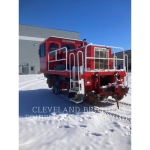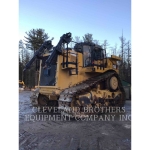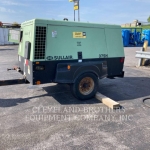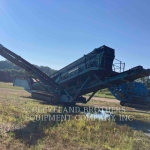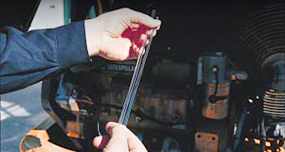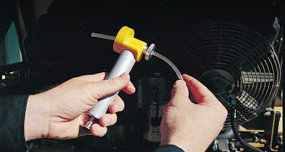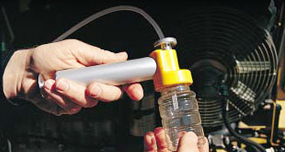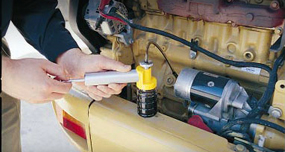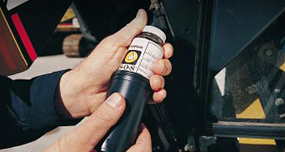How to Take an Oil Sample Using a Vacuum Extraction Pump
How To Take A Good Oil Sample
Developed by Caterpillar, our S·O·S program helps you detect problems before they lead to costly repairs and downtime. We recommend sampling fluid compartments every 250 hours and at each oil change. We recommend sampling on-highway truck engines every 15,000 miles (25,000 km) and at each oil change.
Using vacuum extraction
This sampling method requires a Vacuum Pump (1U5718 or equivalent). Use this method for pressurized systems not equipped with sampling valves. Again, it is important to use a new piece of tubing after sampling engine oil because soot and oil additives may remain in the tubing and contaminate other samples.
STEP A
Turn the engine off. Measure and cut new tubing to the length of the dipstick. If the compartment you are sampling does not have a dipstick, cut the tubing so that it reaches about halfway into the oil depth.
STEP B
Insert the tubing through the head of the vacuum pump and tighten the retaining nut. The tubing should extend about 4 cm (1 in) beyond the base of the vacuum pump head.
STEP C
Install a new sampling bottle onto the vacuum pump and insert the end of the tubing into the oil—do not allow the tubing to touch the bottom of the compartment.
STEP D
Withdraw the tubing from the compartment. Remove the bottle from the vacuum pump and secure the cap on the bottle. Then place the bottle with the completed label into the shipping cylinder.
STEP E
Withdraw the probe from the valve and secure the bottle cap. Then place the bottle with the completed label into the shipping cylinder.
Using a separate pump for coolant samples
Do not use the vacuum pump used to extract oil samples to take engine coolant samples. Although the fluid does not enter the barrel of the pump, glycol residue from a coolant sample can cause a “false positive” in oil samples taken later with the same pump. Designate a separate pump for coolant samples.
Making S•O•S sampling easier
INSTALL OIL SAMPLING VALVES
Most current Cat® engines and machine models are equipped with sample valves for pressurized oil compartments. Some engines and machines may not have these valves, but it is easy and inexpensive to add them. It is important to install valves in the correct location in each system and to avoid contaminating the system during installation. We can help you with specific installation procedures.
USE A TUBE CUTTING DEVICE
Cutting tubing with a pocket knife is difficult—and it allows particles that can contaminate your sample into the tubing. To avoid these problems, we recommend the Tube Cutter (1U7648), which allows you to make a quick, clean cut with just one hand. Replacement blades (1U8589) for the Tube Cutter arealso available.
KEEP SAMPLING SUPPLIES CLEAN
Keep new, empty oil bottles capped and store bottles and tubing in dust-free plastic bags. The vacuum pump and brass valve probe should also be protected from dust. If you feel a sample is contaminated, discard it and take another.
